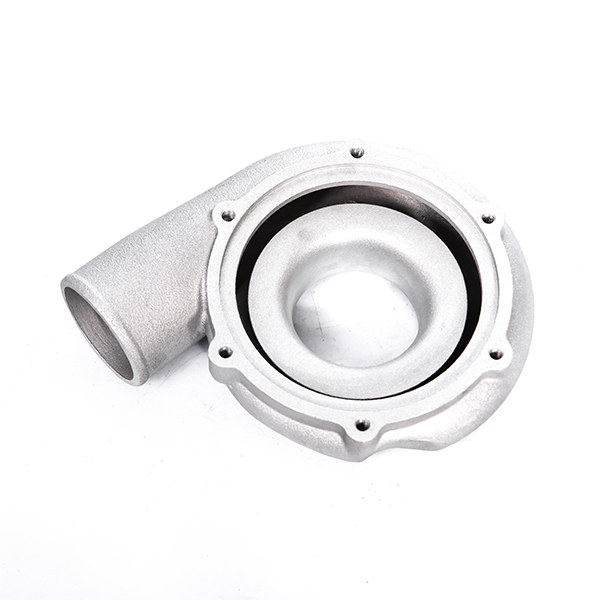Mobile:+86-311-808-126-83
Email:info@ydcastings.com
Techniques for Efficient Casting of Small Aluminum Components for Various Applications
Casting Small Aluminum Parts An Overview
Aluminum casting is a highly efficient manufacturing process that involves pouring molten aluminum into molds to create a variety of parts and components. With its lightweight properties, resistance to corrosion, ability to dissipate heat, and excellent strength-to-weight ratio, aluminum is the material of choice for casting small parts in various industries, including automotive, aerospace, electronics, and consumer goods.
The Advantages of Aluminum Casting
One of the primary advantages of aluminum casting is its versatility. The casting process allows for intricate designs and complex geometries that would be difficult or impossible to achieve with other manufacturing techniques. This is particularly beneficial in industries where lightweight and high-strength components are essential. Additionally, aluminum can be easily alloyed with other metals, enhancing its properties—such as strength, hardness, and conductivity—making it suitable for specific applications.
Another significant advantage of aluminum casting is its superior thermal and electrical conductivity, making it an ideal choice for components that require efficient heat dissipation, such as heat sinks and electrical housings. Furthermore, aluminum's natural resistance to oxidation means that cast parts typically require minimal surface treatment, which can lower production costs and improve efficiency.
Types of Aluminum Casting Processes
There are several methods for casting aluminum parts, each with its own advantages and use cases. The most common methods include
1. Sand Casting This traditional process involves creating a mold from sand and then pouring molten aluminum into it. Sand casting is suitable for producing small to medium-sized parts, and it is known for its flexibility in producing complex shapes. Although it may not yield the finest surface finishes, it is cost-effective for low to medium production volumes.
casting small aluminum parts

2. Die Casting In this method, molten aluminum is injected under high pressure into a pre-designed metal mold (die). Die casting is capable of producing a high volume of parts with excellent surface finishes and dimensional accuracy. It is particularly well-suited for manufacturing intricate and complex designs at scale, making it popular in the automotive and consumer electronics industries.
3. Investment Casting Also known as lost-wax casting, this process involves creating a wax model of the part, which is then coated in a ceramic material. Once the ceramic hardens, the wax is melted away, leaving a mold for the aluminum. Investment casting allows for a high level of precision and is effective for producing small parts with stringent tolerances.
4. Permanent Mold Casting This technique uses metal molds that can be reused multiple times, unlike sand molds which are generally single-use. Permanent mold casting typically results in smoother surface finishes compared to sand casting and is suitable for producing large quantities of small parts.
Considerations for Designing Aluminum Cast Parts
When designing small aluminum parts for casting, several factors must be considered to ensure manufacturability and performance. First, the design should account for the flow of molten aluminum into the mold, avoiding complex features that may trap air and create defects. Additionally, careful consideration of wall thickness is crucial, as uneven thickness can lead to issues such as warping during cooling.
Furthermore, designers should consider the molding process and select features that facilitate easy demolding, such as draft angles. These angles help components release from the mold without damage. Understanding the thermal properties of aluminum, including its cooling rates and contraction, is also vital in creating a design that minimizes stress and defects.
Conclusion
Casting small aluminum parts is a vital manufacturing technique that leverages aluminum’s unique properties to create lightweight, durable components suited for a myriad of applications. With various casting processes available—each with distinct advantages—manufacturers can select the method best suited to their design specifications and production needs. As industries continue to push for innovation and efficiency, aluminum casting remains a cornerstone in the production of high-quality, small-scale parts. The ongoing advancements in casting technology and materials science are likely to enhance the capabilities and applications of aluminum casting in the future. Embracing these techniques can lead to improved products that meet the demands of a rapidly evolving marketplace.
-
Why Should You Invest in Superior Pump Castings for Your Equipment?NewsJun.09,2025
-
Unlock Performance Potential with Stainless Impellers and Aluminum End CapsNewsJun.09,2025
-
Revolutionize Your Machinery with Superior Cast Iron and Aluminum ComponentsNewsJun.09,2025
-
Revolutionize Fluid Dynamics with Premium Pump ComponentsNewsJun.09,2025
-
Optimizing Industrial Systems with Essential Valve ComponentsNewsJun.09,2025
-
Elevate Grid Efficiency with High-Precision Power CastingsNewsJun.09,2025











